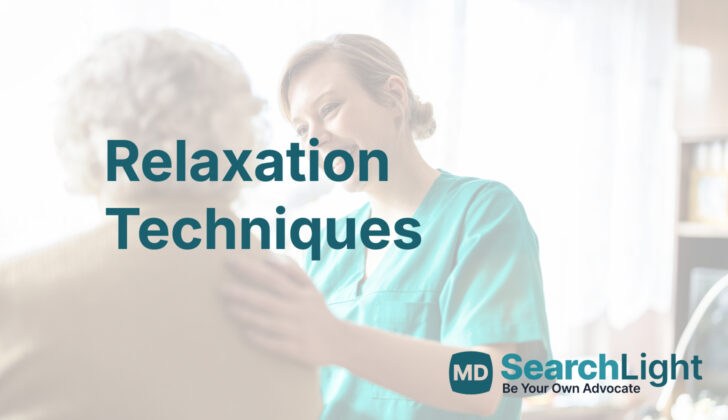Overview of Relaxation Techniques
Relaxation techniques are exercises designed to help people reduce tension and anxiety, both in the body and the mind. These methods have been used for a long time in psychotherapy, which is a type of therapy that helps with mental health problems. But they can also be helpful in different healthcare settings, for patients dealing with a wide range of issues. This includes, but is not limited to, anxiety, depression, pain, and stress.
Various relaxation techniques aim to create a sense of calm and lessen the feelings of stress. When we’re stressed, our bodies might react by increasing our heart rate, making it harder to breathe, or tightening our muscles. Even our emotional state can become stressful. Relaxation techniques can help reduce these physical and emotional responses.
There are many different types of relaxation techniques, and they can be taught by different healthcare professionals. You can also learn them on your own, which is often referred to as self-help.
Why do People Need Relaxation Techniques
Relaxation techniques are special activities that are prescribed to assist patients in reducing both physical and mental stress and worry. These techniques help patients to feel more relaxed and calm in their mind and body.
Preparing for Relaxation Techniques
Here are some examples of relaxation methods that doctors and other health professionals can share with patients. There are many ways to relax, so it’s good to know several methods since what works can vary from person to person. Studies have shown that these relaxation techniques can lower cortisol levels in the body. Cortisol is a hormone that your body makes when you’re stressed. So, by practicing these relaxation methods, you can reduce physical signs of stress (like a racing heart or shortness of breath) as well as how stressed you feel.
But, just like any good health habit, practicing these relaxation methods regularly over time is key to feeling less stressed. It’s not something you can do once and expect to feel less stressed instantly. So, the more you do them, the better they can work to help you relax and lower your stress levels.
How is Relaxation Techniques performed
One type of deep breathing is box breathing. It’s a simple way to help you relax and manage your stress. You can use it anytime; before, during, or after you find yourself in a stressful situation. It’s done in four steps – just like the four sides of a box, hence the name! Here’s how you do it:
- Take a deep breath in through your nose for a count of 4.
- Now hold your breath for a count of 4.
- Then exhale or breathe out for a count of 4.
- Now again hold your breath for a count of 4.
- Repeat!
Note: You can adapt the number of seconds you count depending on what feels comfortable for you. For example, you might count to 2 instead of 4.
Guided Imagery is another relaxation method that uses your imagination to help you relax and manage stress. You create a peaceful setting in your mind which helps distract you from your worries. Because your emotions are often linked to your thoughts, by calming your thoughts, your emotions will follow. Here’s how you do it:
- Find a quiet, comfortable space where you won’t be disturbed.
- Close your eyes and imagine a calming place. This could be a favorite place you’ve been before, or you can create a whole new peaceful place in your mind.
- Now try to involve all your senses in your imagined place. What can you see, hear, smell, taste, and feel? For example, if you’re imagining a beach – you might see the deep blue water, hear waves crashing, smell sunscreen, taste the salty sea air, and feel the warmth of the sun.
- Stay in your calming place for as long as you want to, taking slow, deep breaths throughout.
Progressive Muscle Relaxation (PMR) is a relaxation technique that helps reduce muscle tension – a common symptom of anxiety. The method involves tensing and then relaxing different muscle groups throughout your body. Here’s how you do it:
- Find a quiet, comfortable space where you won’t be disturbed.
- Start by tensing your foot muscles. Curl your toes and tense your foot for 5 seconds. Then slowly relax your foot for 10 seconds. Try to focus on the feeling of releasing the tension and becoming more relaxed.
- Move up to your lower leg muscles. Tense them for 5 seconds, and then relax them for 10 seconds, again focusing on the feeling of relaxation.
- Continue this process with the muscles in your hips and buttocks, your stomach and chest, your shoulders, your face (like squeezing your eyes shut), and finally your hands (by making a fist).
Note: Don’t tense your muscles to the point where it hurts, and remember to take slow, deep breaths in between.
What Else Should I Know About Relaxation Techniques?
Relaxation strategies are methods that are used to help people who are dealing with stress. Everyone agrees that having too much stress, especially over a long period, can be bad for both your body and mind. Ongoing stress from childhood or throughout your adult life can lead to health problems like high blood pressure and mental health challenges.
Moreover, long-term stress has been found to affect brain development, particularly the parts of your brain responsible for managing emotions (the amygdala) and making decisions (the pre-frontal cortex). This is why it’s beneficial that people have ways to relax and reduce stress. Using these strategies can help lower stress levels, which can lead to better health and improved decision-making abilities.











